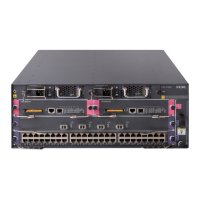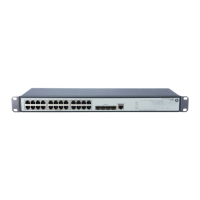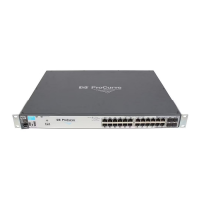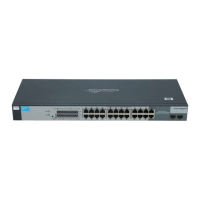• FICON, FICON Cascading, and FICON CUP ready.
• ISL Trunking (licensable), which allows up to eight ports (at 4, 8, or 16 Gb/s) between a pair
of switches combined to form a single, logical ISL with a speed of up to 128 Gb/s (256 Gb/s
full duplex) for optimal bandwidth utilization and load balancing.
• DPS, which optimizes fabric-wide performance and load balancing by automatically routing
data to the most efficient available path in the fabric.
• HP-branded SFP+ optical transceivers that support any combination of SWL and LWL or ELWL
optical media among the switch ports.
• Support for unicast, multicast (255 groups), and broadcast data traffic types.
• HP B-series Fabric OS, which delivers distributed intelligence throughout the network and
enables a wide range of value-added applications such as Advanced Web Tools and Zoning.
Optional Fabric Services include Adaptive Networking with QoS, Extended Fabrics, Enhanced
Group Management, Fabric Watch, ISL Trunking, and APM.
• Support for AG configuration where server ports connected to the fabric core are virtualized.
• Hardware zoning is accomplished at the port level of the switch and by WWN. Hardware
zoning permits or denies delivery of frames to any destination port address.
• Extensive diagnostics and system-monitoring capabilities for enhanced high RAS.
• 10 Gb/s FC integration on the same port provides DWDM metro connectivity on the same
switch (can be done on the first eight ports only).
• Real-time power monitoring enables users to monitor power usage of the fabric at a switch
level.
• Port-to-port latency minimized to 800 nanoseconds through cut-through frame routing at 16
Gb/s.
Platform components
• A system motherboard that features a PowerPC 440EPx RISC CPU running at 667 MHz, with
integrated peripherals, and provides high performance with low power consumption.
• An RJ-45 10/100 Base-T Ethernet system management port that supports switch IP address
discovery and configuration.
• One RS-232 serial port with an RJ-45 connector for initial switch setup and factory default
restoration. (The integral LEDs remain unlit at all times.)
• A USB port that provides storage for firmware updates, supportsave command output, and
storage for configuration uploads and downloads.
• Two hot-swappable, redundant power supply and fan assemblies. There are two fans per
power supply.
• Designed for rack mounting in a 19-inch EIA rack (1U high).
• One LED (green/amber) per FC port to indicate status.
• One LED (green) for system power.
• One LED (green/amber) for system status.
• Two Ethernet LEDs (integrated with RJ-45) for speed and activity status.
• SEEPROM for switch identification.
• Voltage and temperature monitoring.
• RTC with battery.
Overview 7
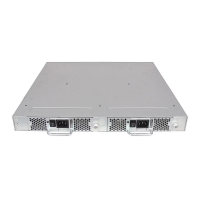
